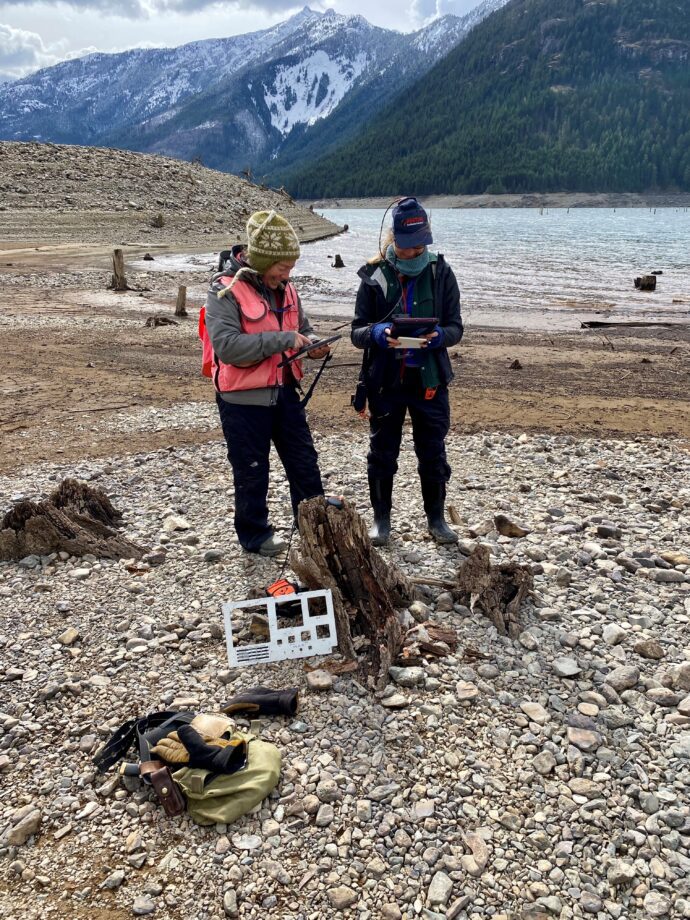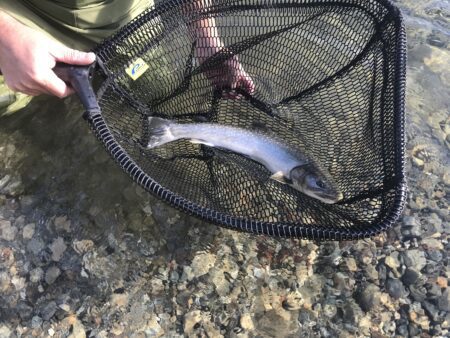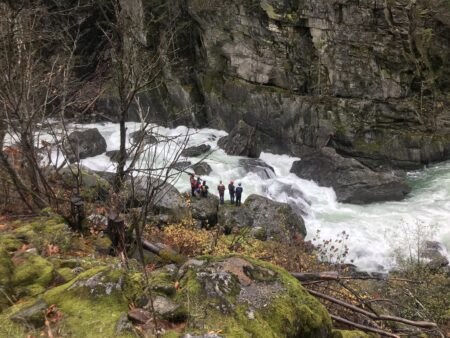
Two extraordinary summers and a total of 18 months of intense research on the Skagit River are complete with the results of 33 studies submitted to the Federal Energy Regulatory Commission (FERC). The filing of the Updated Study Report signals that another milestone has been reached in the Skagit Hydroelectric Project relicensing process.
Numerous Seattle City Light staff and expert consultants conducted these studies according to the study plan set in July 2021 to better understand and address environmental and other effects of the three-dam system. At the request of our partners, City Light expanded the initial study plan and nearly doubled the amount of funding to $20 million. The 33 studies included:
- 3 for recreation
- 8 for water, water quality, and river dynamics
- 5 for fish
- 6 for wildlife and other species
- 4 for cultural impacts
- 4 for wetlands and plants
- 3 for operations
While not all of the 33 studies were required by FERC for the relicensing process, they were completed as part of our commitment to the Tribes and local, state and federal agencies. These license partners are using the studies to guide protection, mitigation and enhancement plans as a part of the next license agreement.
Updating the science supporting our mitigation strategies is crucial because the environment is always changing. Climate impacts are challenging and dynamic, and sound science is essential to protect the environment we depend upon for clean air, water and electricity. These studies also explore how to protect the many species that live in the Skagit River watershed.
Key findings help support fish, flood-risk management and recreation
Study findings will help inform many future decisions including operations, flow, environmental restoration projects, recreational opportunities and more. Here are just a few of the many interesting insights:
- Genetic studies – which help us better understand and manage fish, especially those that are endangered – identified a new, distinct sub-population of rainbow trout in the upper watershed above Ross Dam, which has likely been in existence for thousands of years.
- The research helped us create new models to help balance flood risk management, water storage and the flows needed to protect healthy salmon down river.
- We developed a better understanding of the potential habitat that is available to support fish in the reservoirs.
- Recreation studies informed us of what visitors are doing and learning about when they are near the project so that we can enhance their experience.
Fish passage commitment supported by research
One of the most asked-about changes to dam operations is around fish passage. Since work on the Skagit River project first began more than 100 years ago, a lot has changed. Due to climate change and other environmental stressors, our fish populations from Puget Sound to Canada are in danger. We need to look for new ways to support those populations.
We committed to comprehensively evaluating the feasibility of providing upstream and downstream fish passage at Gorge, Diablo and Ross dams. We also included an aquatic habitat study among the 33 studies conducted over the past 18 months to address the suitability of fish habitat in Ross Lake. These studies will inform the fish passage program that we are currently developing in collaboration with the Treaty Tribes, and federal and state agencies.
As part of its Draft License Agreement filed with FERC in November 2022, City Light laid the groundwork for a comprehensive fish program, including fish passage, that makes improvements to the whole ecosystem. Many other agencies and Tribes will have input into the ultimate design and implementation of the fish program, and more work will be done. City Light will include a fish passage program in the Final License Application (FLA) to be filed at the end of April.
The continued importance of science and collaboration
While Seattle City Light is responsible for operating the dams, we do not make decisions alone because our choices affect the whole river. While hydroelectric power is the most reliable form of renewable energy available, all power-generation systems have costs. That’s why City Light takes a comprehensive, ecosystem-wide view of the whole river. We take our stewardship responsibilities seriously and manage the hydroelectric project to these priorities:
- Flood risk management
- Fish
- Recreation
- Power generation
Relicensing is a multi-year, collaborative process designed to ensure all partners’ concerns are heard and incorporated into the license and other operating agreements. The next license will likely be in place for 40 to 50 years. We’re setting a strong direction with science at our core and allowing for adaptability to changing environmental conditions. Communities up and down the river are affected by how we operate the dams, and the progress made has been significant.
Ecosystems are delicate, and seemingly small changes in one place can have significant repercussions in another. This is an important legacy for Seattle and surrounding communities, and we are grateful to all the City staff, partners and scientists who have worked hard over the last few years to get us to this point.
To read the official Updated Study Report, visit the FERC Library.


